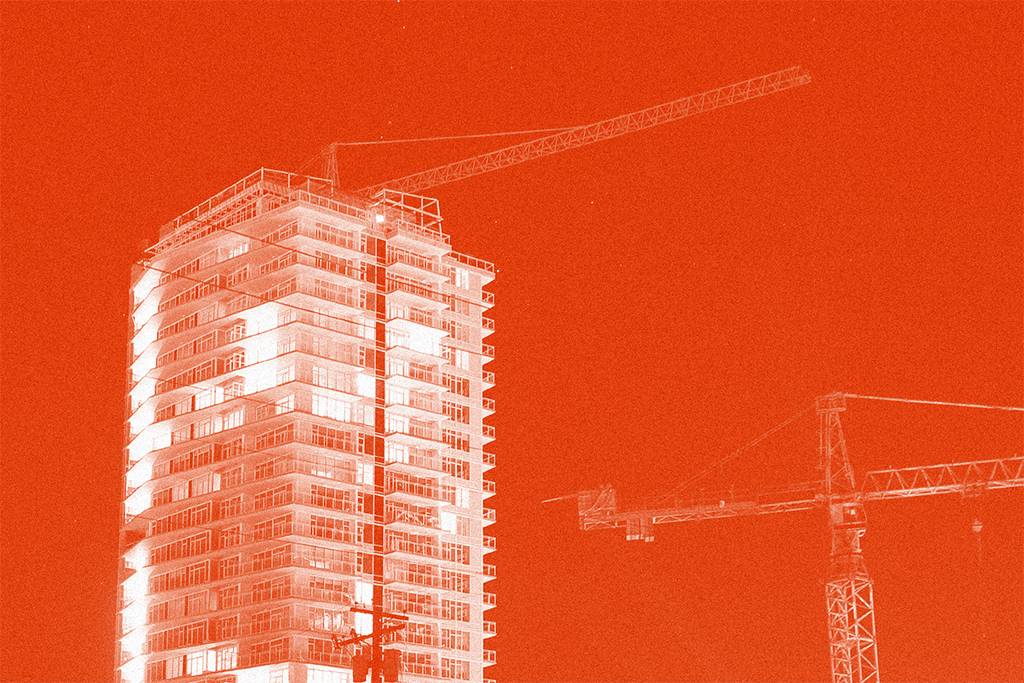When the BC NDP introduced a new speculation and vacancy tax soon after forming government in 2017, their political opponents warned it would make the province less welcoming to people who want to move here to retire and second home-owning Americans.
But four years after the tax was first introduced, the BC NDP are calling it a success that should remain in place. That’s because a review of the tax, commissioned by the government and carried out by an economist and a data analyst, found that it has been effective in returning vacant homes to the rental market and putting a damper on soaring home prices.
“I was surprised by how sensitive owners were to the tax,” said Tsur Somerville, an economics professor at the University of British Columbia who worked on the review of the speculation and vacancy tax.
“I had thought that owners willing to leave a property vacant would not be as price sensitive as they were.”
The year 2017 is a long time ago, so let’s recap: Metro Vancouver had just experienced a real estate price spike of epic proportions. The cost of homes had risen as much as 40 per cent in some markets between 2015 and 2016. Voters were alarmed, the media was obsessed, yet the BC Liberal government of the time insisted the problem was that not enough housing was being built to meet demand.
But economists like Somerville had warned that a wave of money from offshore buyers had likely contributed to the massive spike in home prices. After the first-ever data collection of foreign buyers showed that five per cent of Metro Vancouver real estate was sold to buyers who don’t live in Canada during a 20-day period, the Liberals did introduce a foreign buyer tax.
When the BC NDP took power in 2017, the party doubled down on taxing real estate speculation. The speculation and vacancy tax, or SVT — the first tax of its kind in Canada — was introduced in 2018, along with new property taxes that applied to homes worth $3 million and up. The BC NDP also increased the existing tax on foreign buyers.
All that focus on speculation and foreign buyers didn’t prevent real estate prices from rising again during the COVID-19 pandemic as buyers rushed to purchase larger homes in the suburbs and rural areas. BC Liberal Leader Kevin Falcon has taken aim at the NDP for this, saying the party has focused too much on taxing speculation and not enough on building more housing.
Then there’s the link between real estate and racism. The intense focus on wealthy buyers from China certainly played a part in the disturbing wave of anti-Asian racism that hit the province during the COVID-19 pandemic. In reality, much of Canada’s real estate speculation is spurred by people who live in Canada. Recently, data from Statistics Canada showed that around 30 per cent of the housing stock in both B.C. and Ontario is owned by people who own multiple properties.
Despite those criticisms, after modelling the effect of the speculation and vacancy tax, Somerville says the tax should remain in place for now. Here’s how the SVT works, and what Somerville and his colleague Jake Wetzel found when they took a look at how the tax influenced B.C.’s real estate market.
How does the SVT work?
For Canadian citizens and permanent residents, B.C.’s speculation and vacancy tax is 0.5 per cent of the assessed value of a home. For foreign buyers and satellite families — where some family members live in B.C. but the family’s income comes from outside the country — the tax is two per cent. Homeowners can avoid paying the tax if they rent out their property or designate their B.C. property as their principal residence — the home they live in for the longest period in the calendar year. The SVT applies to certain urban areas in B.C. that have high home prices and low rental vacancy rates (Victoria and the rest of the Capital Region, Nanaimo, Metro Vancouver, Kelowna, Chilliwack and Abbotsford) and the tax revenues go towards affordable housing projects in those regions.
From 2018 to 2020, the province has raised $231 million in revenue from the SVT.
Yes, properties were being left vacant. And that was a problem
Canada Mortgage and Housing Corp. data showed that in the regions where B.C.’s SVT was applied, there was a higher level of non-resident ownership than in other jurisdictions before the tax came into effect, and that non-resident ownership was highest for new condo units.
“For housing affordability, this is particularly worrisome as it indicates a larger share (nearly 16 per cent for Vancouver CMA [Census Metropolitan Area] condos built 2016-17) of the new supply that would normally help improve affordability is being bought by those who are extremely unlikely to have their housing demand determined by local incomes,” according to Somerville and Wetzel’s report.
Somerville and Wetzel estimate that the SVT “has helped to add” around 20,000 housing units to B.C.’s long-term rental market between 2018 and 2020.
Somerville told The Tyee that estimate is backed up by data from the Canada Mortgage and Housing Corp., which found that a total of 18,000 rented condos were added to B.C.’s housing stock in 2019 and 2020. In contrast, between 2011 and 2018, between 1,000 and 5,000 rented condo units were added or lost every year.
The increase in rental housing stock in the Lower Mainland is “well above” the number of units added by new purpose-built rental buildings in the region, say the report authors. They conclude that there was “a very large movement in strata apartment units into the rental pool,” with a “timeline consistent with the financial incentives… that the SVT has created for owners of vacant condos.”
Prices dropped and vacancy rates rose… for a while
When Somerville and Wetzel compared housing price growth before and after the SVT was introduced, they found housing prices either declined or grew much more slowly for B.C. regions with the SVT than regions where the SVT didn’t apply. They found a similar pattern when they compared B.C. cities where the SVT applies with cities in other provinces. The homeownership burden — the annual cost of ownership compared to income — also dropped the most for B.C. regions with the SVT, compared to similar-sized municipalities in Ontario, the Prairies and the Maritimes.
Rental vacancy rates, which were very low in all the SVT cities before the tax was introduced, also eased dramatically after the tax was introduced.
However, the report authors only studied the years up until 2020, meaning their data doesn’t include 2021 and 2022, when rents and home prices have both risen because of pandemic-era demand.
The number of property owners that pay the SVT has dropped
Over time, the number of property owners who have to pay the SVT has dropped because owners have rented their properties out, have sold the property or have claimed the principal residence exemption.
In 2018, the tax applied to 8,920 properties in B.C. By 2020, that number had dropped to 6,556.
The fact that owners are renting out their properties or claiming the principal residence exemption is a sign that the tax is doing what it was intended to do, Somerville said.
“The decline in the number reflects the effect of the tax, which is a strong argument against removing it,” he said.
“The tax should be removed, though, if market conditions are such that there is sufficient natural vacancy in rental markets and more balanced affordability in ownership markets.”
🔥🔥🏠
We hope you continue to follow along with our column!
Remember, if you’ve got housing stories of your own — whether it’s market hijinks, tenancy horrors or survival tips — you can email us at [email protected]. We’d love to hear from you.
One final thing. You may have noticed that you can read all of our journalism without a paywall. The Tyee is grateful to our monthly Builders, who keep the publication accessible to everyone. If you feel like chipping in, you can learn more at support.thetyee.ca. ![]()
Read more: Local Economy, BC Politics, Housing

















Tyee Commenting Guidelines
Comments that violate guidelines risk being deleted, and violations may result in a temporary or permanent user ban. Maintain the spirit of good conversation to stay in the discussion.
*Please note The Tyee is not a forum for spreading misinformation about COVID-19, denying its existence or minimizing its risk to public health.
Do:
Do not: